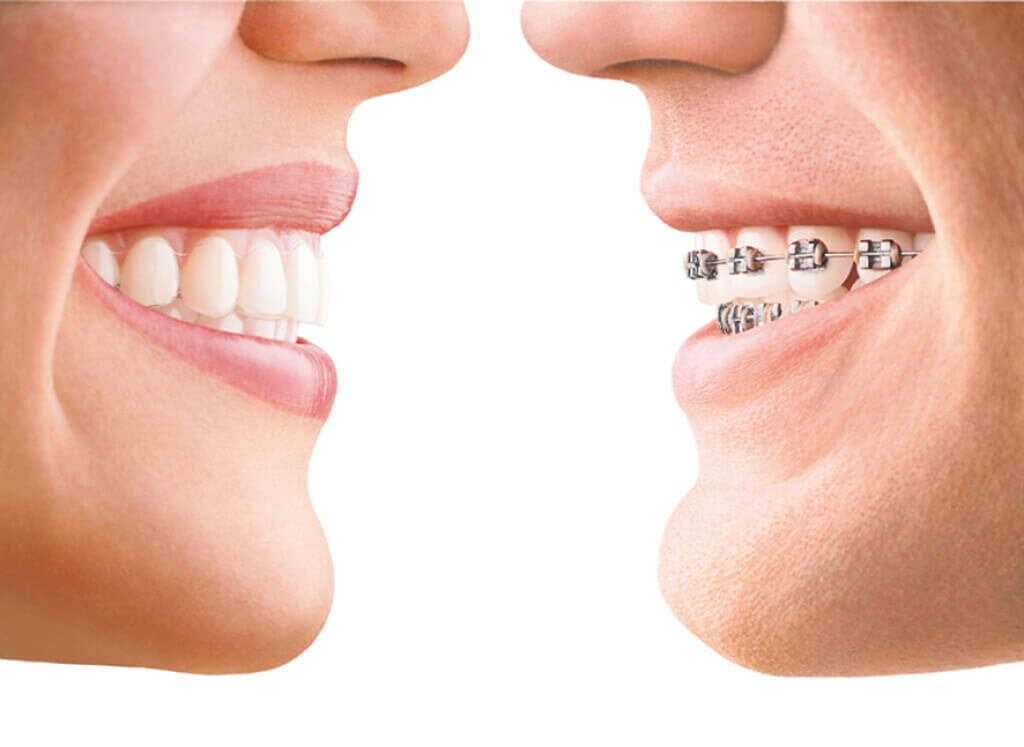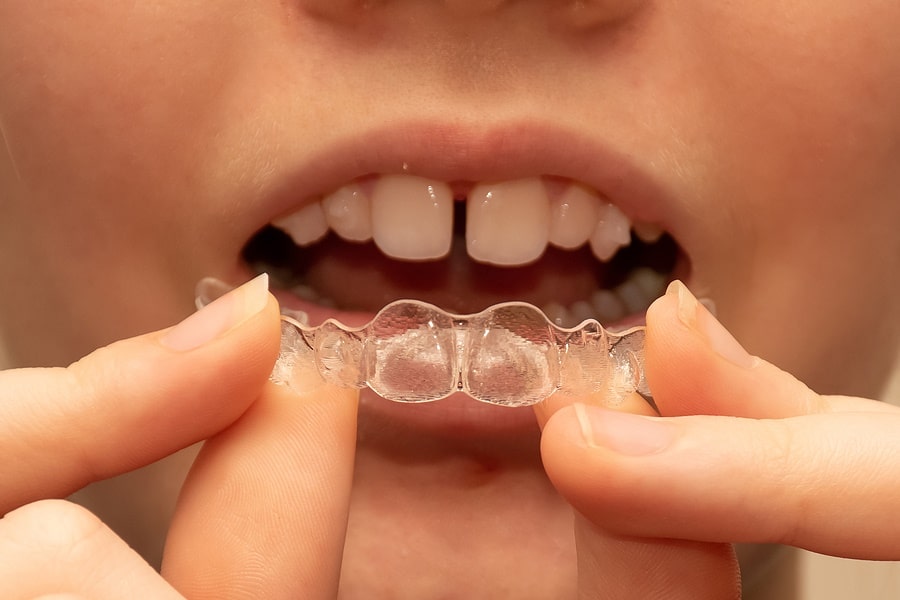How Invisalign Works: Your Overview to Clear Aligners and Their Effectiveness
How Invisalign Works: Your Overview to Clear Aligners and Their Effectiveness
Blog Article
Invisalign vs. Typical Dental braces: Which Choice Is Right for You?
When considering orthodontic therapy, the choice in between Invisalign and typical braces offers a number of crucial elements that warrant cautious examination. Invisalign offers a discreet choice with detachable aligners, while typical dental braces provide an extra noticeable yet reliable option for severe misalignment. Each option incorporates distinct advantages and downsides connected to visual appeals, convenience, therapy period, and expense. Comprehending these subtleties is critical for making an informed decision that straightens with your personal preferences and way of life. The concern stays: which option will best fulfill your orthodontic requirements and assumptions?
Overview of Treatment Choices

In contrast, typical braces contain steel brackets and wires that are bonded to the teeth. This technique applies continual pressure gradually to attain positioning. While reliable for intricate orthodontic problems, conventional braces need routine check outs for adjustments and can posture difficulties in keeping oral health due to the difficulty of cleaning up about braces and cables.
Both choices have their benefits, and the selection typically rests on details oral problems, lifestyle preferences, and client compliance. Ultimately, seeking advice from an orthodontic expert is critical for figuring out one of the most ideal treatment strategy tailored to individual needs. Understanding the subtleties of each alternative can considerably influence the general success of orthodontic treatment.
Aesthetic Factors To Consider
A considerable element influencing the option in between Invisalign and conventional braces is the aesthetic allure each treatment provides. Invisalign aligners are crafted from clear plastic, making them basically undetectable when worn. This very discreet look is specifically appealing to teens and grownups who might feel uncomfortable concerning their orthodontic therapy. The capability to maintain a natural smile throughout the alignment procedure can substantially improve the person's self-confidence in social and expert setups.
On the other hand, typical braces contain metal brackets and wires, which can be extra noticeable. While advancements in orthodontic technology have actually led to the advancement of smaller brackets and tinted elastics, typical dental braces still maintain an even more noticeable profile. For some individuals, the visibility of braces may deter them from looking for essential therapy.
Ultimately, the choice in between Invisalign and standard braces may depend upon individual choices relating to aesthetics. People who focus on discernment commonly favor Invisalign, while those who are much less concerned about visibility may choose for conventional braces. Recognizing the aesthetic ramifications of each option is vital for making an informed choice that lines up with one's lifestyle and preferences.
Comfort and Convenience

In terms of benefit, Invisalign aligners are detachable, making it possible for clients to enjoy their favored foods without restriction and keep ideal oral hygiene. Brushing and flossing are streamlined, as the aligners can be gotten during these regimens, whereas typical dental braces call for careful navigating around brackets and cables.
Additionally, Invisalign's dynamic system enables fewer orthodontic visits. Clients typically obtain numerous collections of aligners simultaneously, which can enhance the therapy procedure and reduce time invested in the orthodontist's chair. On the other hand, standard braces necessitate normal modifications, making them less convenient for those with active routines. Invisalign. In general, the comfort and ease of Invisalign make it an enticing option for many people seeking orthodontic therapy.
Therapy Period and Efficiency
While both Invisalign and standard braces are efficient in fixing oral misalignments, the period of treatment can vary considerably in between the two alternatives. Typically, Invisalign therapy can take anywhere from 12 to 18 months, depending upon the complexity of the situation. The clear aligners work by slowly changing teeth into their preferred placements, and regular follow-ups with an orthodontist assistance make sure progress remains on the right track.
In comparison, standard dental braces commonly require a longer commitment, usually varying from 18 months to 3 years. This is because of their set nature and using cables and braces, which can be extra effective for complicated situations and serious misalignments (Invisalign). The treatment performance of traditional braces is well-documented, as they permit for precise adjustments and better control over tooth activity
Inevitably, the option between Invisalign and standard braces may depend upon both the expected treatment period and the details oral concerns available. Consulting with an orthodontist is essential, as they can offer customized recommendations based visit this web-site on individual demands, ensuring the chosen approach lines up with desired durations and results.
Expense Contrast and Insurance Coverage Options
Expense plays a considerable role in the decision-making procedure for people thinking about orthodontic treatment, whether going with Invisalign or conventional braces. Generally, the expense of Invisalign ranges from $3,000 to $8,000, while traditional braces normally set you back between $2,000 and $6,000. Variables affecting these prices include the intricacy of the situation, the duration of treatment, and geographical place.
Many oral insurance coverage strategies provide partial coverage for orthodontic treatments, however the specifics can differ extensively. Typically, conventional braces may be much more often covered by insurance strategies contrasted to Invisalign, which some insurers categorize as a cosmetic treatment.
In addition, numerous orthodontic practices provide versatile repayment strategies, making both therapy alternatives more available. Individuals must make inquiries concerning possible funding choices and discount rates for ahead of time repayments. Reviewing the complete price, consisting of insurance policy advantages and settlement strategies, is necessary for making a notified decision that aligns with both aesthetic choices and spending plan considerations.
Final Thought
In summary, the selection between Invisalign and typical braces hinges on several factors, consisting of aesthetic preferences, comfort, therapy duration, and price. Invisalign provides a very discreet, removable alternative that helps with dental hygiene and nutritional flexibility, while standard dental braces may be much more ideal for complex dental issues and typically come with a lower cost point. Inevitably, examination with an orthodontist is necessary to examine individual situations and establish the most ideal treatment option for attaining ideal dental placement.
When taking into consideration orthodontic therapy, the option in between Invisalign and traditional braces provides numerous crucial factors that warrant mindful assessment.Comparing Invisalign and typical dental braces discloses distinctive treatment options for orthodontic adjustment.While both Invisalign and standard dental braces are reliable in dealing with oral imbalances, the period of treatment can differ significantly between the two alternatives.Expense plays a substantial duty in the decision-making procedure for people considering orthodontic therapy, whether deciding for Invisalign or typical dental braces.In summary, the selection between Invisalign and conventional braces hinges on multiple variables, consisting of visual preferences, comfort, therapy click to read period, and cost.
Report this page